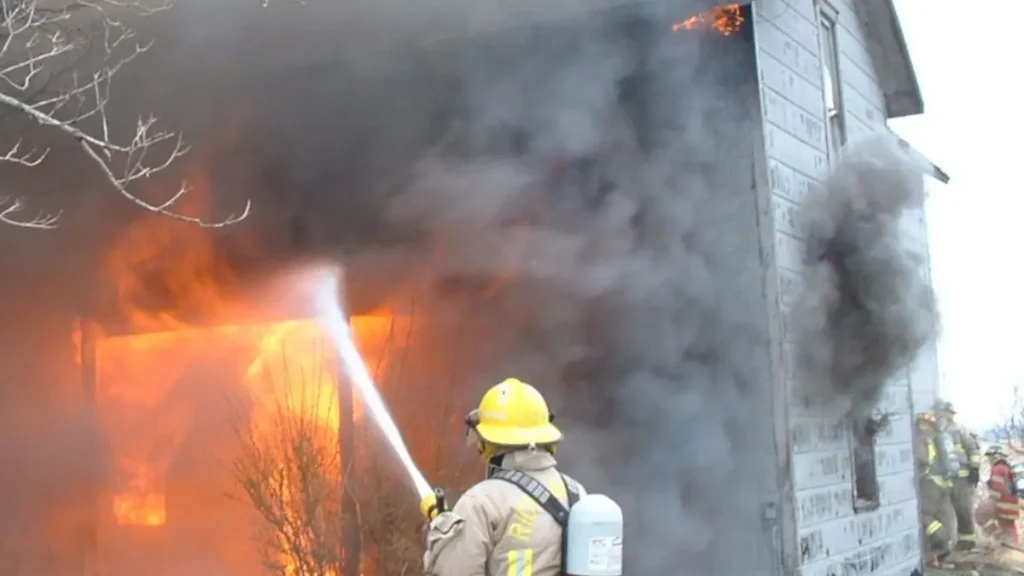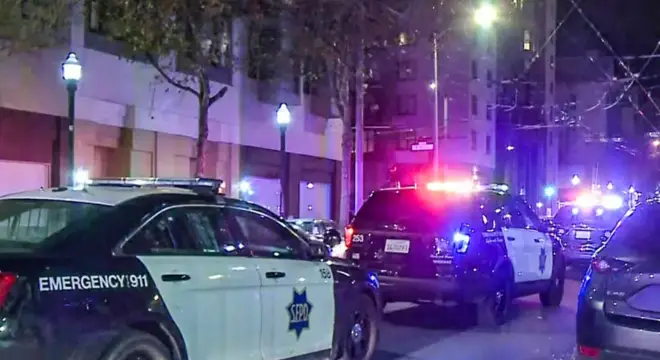Queens Home Blaze Leaves One Person Dead, Officials Confirm
I’ve covered a lot of fire incidents over the years, but this one hits differently. A quiet block in Auburndale turned into a scene of chaos on Thursday night when a home went up in flames, and firefighters walked into a bedroom only to find an elderly resident who didn’t make it out.
If you know this part of Queens, you know how still the evenings usually are. Just before 8 p.m., that calm broke. Flames were pulling through the second floor, smoke pushing into the street, and neighbors watching helplessly as FDNY crews forced their way through a jammed front door.
What stood out to me right away was how fast things escalated. Twelve units. Sixty responders. One injured firefighter. And despite all that manpower, they still had to fight through heavy clutter just to reach the second floor. When a home is packed tight, seconds turn into minutes — and minutes decide outcomes.
The hardest part to write is this: the person inside was living alone. By the time crews reached the bedroom, it was already too late.
This is the kind of story that makes you rethink your own home, your routines, and even the people you check in on.
If a fire broke out in your home right now, do you know how quickly you could get out — or help someone who lives alone?
How the Fire Started and What We Know So Far?

When I reviewed the initial details released by ABC7, one thing became clear: this fire didn’t give anyone much time. It started just before 8 p.m. on 194th Street — a typical weeknight, people settling in, dinner dishes still on the counter.
According to early report, the fire was already pushing through the second floor by the time neighbors realized something was wrong. That’s important, because second-floor fires trap heat fast. If someone is inside a bedroom upstairs, their window or smoke alarm is their only warning.
FDNY rolled up with 12 units and nearly 60 people. That kind of response tells you how serious it looked from the street. And when crews forced open the front door — something they don’t do unless they absolutely have to — they were met with heavy smoke and a home packed tighter than they expected.
What I want you to notice is this: the fire didn’t have to be massive to be deadly. The timing, the layout, the clutter… it all lined up in the worst possible way.
Why Firefighters Struggled to Move Inside the Home?
Once you hear that firefighters “had to fight through clutter,” you understand why every step inside that house slowed them down.
Clutter isn’t just a housekeeping issue — in a fire, it becomes a physical barrier. It blocks doors. It narrows hallways. It traps heat. It hides the fire’s source. And when visibility is already near zero, even a small pile can become a serious obstacle.
I’ve spoken with firefighters in the past who’ve told me that clutter turns a 30-second search into a five-minute crawl. Think about that difference in a burning home.
Inside the Auburndale house, crews had to squeeze through tight, smoky spaces while flames were climbing the staircase. Every second they spent battling obstacles was a second the person inside didn’t have.
And honestly, this is something most of us forget: your home layout during a normal day might feel fine… until the moment you actually need to escape.
I’ve seen this happen in other cases too, like a Wisconsin home fire where the house was badly damaged but everyone escaped — firefighters said clutter slowed their movement there as well.
The Victim: Found Alone in a Second-Floor Bedroom
This is the heaviest part of the story, and I want to treat it with respect.
Firefighters eventually made it upstairs and pushed into a bedroom that was already filled with smoke. That’s where they found the victim — an elderly resident who lived alone.
When someone lives alone, their chances of surviving a fast-moving fire drop sharply. There’s no one else in the house to smell something burning, to yell for help, to guide them out. And if mobility or reaction time is already limited, the danger multiplies.
A second-floor bedroom becomes a trap when smoke fills the hallway. People don’t die from flames first — they’re overwhelmed by smoke long before the fire reaches them.
I keep thinking about how quiet that house must’ve been right before the fire started. No one realizing what was coming. No one there to help them get out.
It’s a heartbreaking reminder that independence can turn into vulnerability without warning.
By the way, a lot of people in our community share quick real-time safety updates and prevention tips on a WhatsApp channel I’m part of. I find it helpful because small reminders often stick when you see them regularly.
One Firefighter Injured During the Response
One firefighter suffered minor injuries during the operation, and that detail might seem small next to the loss of life — but it says a lot about the conditions inside.
When a home is filled with clutter, sharp objects, unstable piles, and blocked exits, firefighters aren’t just fighting flames… they’re fighting the layout. They’re dodging hazards in the dark, carrying heavy gear, managing heat, smoke, and collapsing materials all at once.
Injuries during these kinds of responses are common, but they’re almost always preventable. Clear walkways, working doors, windows that open — these things matter more than we think.
The fact that a trained firefighter got hurt tells you everything about the environment they were navigating.
The Cause: Still Under Investigation, but Patterns Matter

Right now, officials haven’t announced what started the fire. That’s normal — causes often take days or weeks to confirm. Investigators have to sift through debris, examine electrical points, check heating sources, and look for burn patterns that survived the flames.
But whenever I see a fire in an older two-story home, a few recurring risks come to mind:
- aging wiring
- overheated outlets or space heaters
- unattended cooking
- candles or smoking
- overloaded power strips
- stored items too close to heat sources
None of this is confirmed here — but these patterns show up again and again in New York fire reports.
What makes this investigation harder is the same thing that slowed firefighters down: clutter. When a room is packed, it can completely bury the point of origin. It forces investigators to do twice the physical work just to find the first spark.
And until the cause is confirmed, all we can say is this: the conditions inside the home gave the fire more time and more fuel than anyone realized.
How This Fire Hit the Auburndale Community
If you’ve ever lived in a neighborhood like Auburndale, you know how quickly news spreads — not through headlines, but through porch conversations, late-night texts, and that uneasy hush that settles over the block after a tragedy.
People stepped outside that night thinking it was just another siren. Then they saw how many trucks lined the street. How long firefighters stayed. How the mood shifted from urgent to quiet.
A lot of neighbors didn’t know the victim personally, but almost everyone knew the house. That’s how it is in Queens — you may not speak every day, but you recognize the faces, the routines, the lights that switch on at the same time every evening.
And when someone who lived alone dies like this, it changes how everyone around you thinks. Suddenly, you’re wondering about your own parents, your own neighbors, that elderly person two doors down who rarely comes out. You start asking yourself questions you usually push away: Would I notice if something went wrong? Would anyone notice for me?
These incidents don’t just burn a house. They shake a neighborhood awake.
What This Fire Teaches Us About Staying Safe at Home
Whenever I read about a fire like this, I think about all the small things we overlook — the clutter in the hallway we’ll “deal with later,” the smoke alarm we’ve been meaning to test, that one outlet powering half the room.
Fires don’t wait for perfect timing. They start exactly when you’re relaxed, distracted, or alone.
Here’s what this case makes painfully clear:
- Clear walkways matter. If firefighters struggled to move through that home, imagine how hard it is for someone inside to escape in the dark.
- Smoke alarms save time — and time saves people. One working alarm on the second floor can be the difference between waking up and never waking up.
- If you live alone — or love someone who does — regular check-ins aren’t optional. Not because someone is weak, but because fire doesn’t give anyone a fair chance.
I’m not telling you this to scare you. I’m telling you because this story is exactly the kind that never feels real until it happens on your block.
Take ten minutes today — not tomorrow — and walk through your home with your eyes open. You’ll notice things you’ve been ignoring.
In another recent incident, two residents in Oklahoma City managed to escape their burning home because they had a clear path to the door — a reminder that escape routes matter more than we think.
A Growing Pattern in NYC’s House Fires
I wish I could say this was a rare case, but it isn’t. New York has seen a steady rise in deadly home fires involving older homes, older residents, and cluttered interiors.
Most of the homes in neighborhoods like Auburndale were built decades ago. Wiring ages. Outlets loosen. Heating habits change. And life gets busy — people start storing things “just for now,” until one room slowly turns into a maze.
What makes these fires especially tragic is how fast they turn deadly. The structure is familiar, the layout is predictable, but the risks are often hidden until something goes wrong.
If you look at recent NYC fire reports, you’ll notice a pattern: fires that start small, spread faster than expected, and turn fatal before help arrives.
This isn’t fearmongering — it’s a wake-up call. And if the city is seeing the trend, it means we as residents have to see it too.
We’ve seen similar patterns elsewhere too — an East Louisville resident was displaced but survived because firefighters reached the scene before the flames took over the entire structure.
What I Keep Thinking About After This Incident?
When I first read the details of this fire, I didn’t picture the flames. I pictured the moments right before them — the quiet, the stillness, the normalcy.
One person going about their evening. One home that had probably felt familiar and safe for years. One fire that changed everything in minutes.
If there’s anything I want you to take from this story, it’s this: don’t wait for a crisis to rethink your space. Don’t assume you’ll “figure it out” if something happens. Fires don’t leave room for improvising.
Check your alarms. Clear the exits. Talk to the people around you — especially the ones living alone.
The hardest lessons are the ones someone else didn’t survive to tell. We owe it to them to learn anyway.
If a fire started in your home tonight, what’s the first thing you’d wish you had already fixed, checked, or cleared?
If you want to read more real home-fire stories and what they teach us about safety, you can explore our latest coverage in our home incidents section — it’s worth keeping yourself prepared.
Disclaimer: This article is based on information reported by FDNY officials and local news sources. Details may change as investigators release updated findings. Always refer to official statements for the most accurate and current information.


